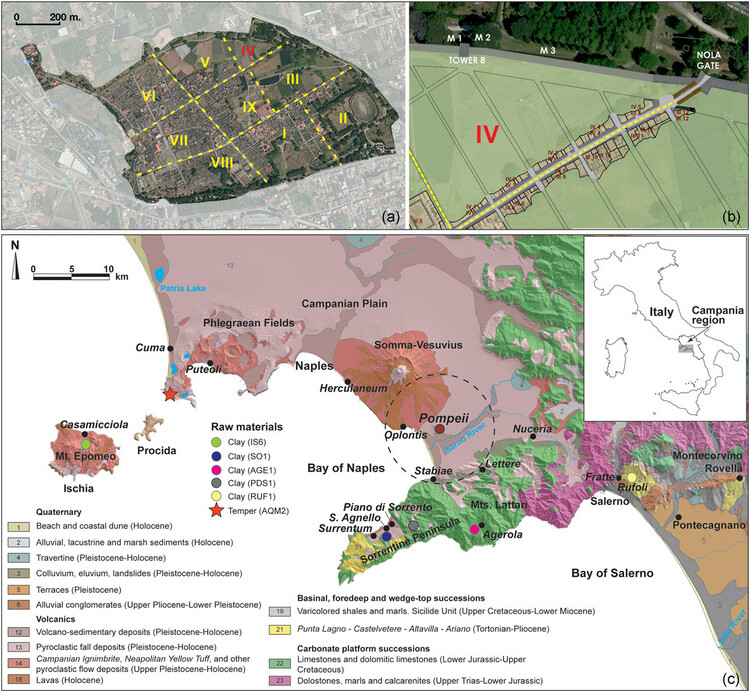
Article | Open Access Published: 3 May 2021
Guarino, V., De Bonis, A., Peña, J. T.,Verde, M., & Morra, V. (2021).
Multianalytical investigation of wasters from the Tower 8/Porta di Nola refuse middens in Pompeii: Sr–Nd isotopic, chemical, petrographic, and mineralogical analyses
Geoarchaeology,1–28. https://doi.org/10.1002/gea.21858
ABSTRACT: A total of nine representative pottery fragments belonging to ferruginous, carbonate, and thin‐walled wares were recovered in refuse middens outside the fortification wall of Pompeii and subjected to a program of multianalytical operations (thermal ionization mass spectrometry, X‐ray fluorescence, X‐ray powder diffraction analysis, scanning electron microscopy–energy‐dispersive spectrometry techniques, optical microscopy). The fragments bear manufacturing defects, indicating their local production in workshops located somewhere at Pompeii. These three groups display a similar volcanic coarse component that exhibits distinct chemical compositions. The volcanic component consists of alkali feldspar, clinopyroxene, plagioclase, minor garnet, and rock fragments (with primarily plagioclase and leucite), pointing to an origin from the Somma‐Vesuvius. The fingerprint of the Sr–Nd isotopes of carbonate ware suggests an affinity with high‐CaO clays from Rufoli, a subdivision of Salerno. Sr–Nd isotopes also suggest that clays from the Sorrentine Peninsula were used: A clay mixture of different argillified pyroclastic materials was employed for the low‐CaO ferruginous ware, whereas the low‐CaO thin‐walled ware was manufactured with a marine varicolored clay. The distribution of materials likely occurred by sea via the port at Salernum and Surrentum. The combination of different types of complementary data obtained through this program of analysis illustrates the importance of combining both quantitative petrographic and chemical characterization in the evaluation of archaeological pottery.
Copyright: This is an open access article under the terms of the Creative Commons Attribution License, which permits use, distribution and reproduction in any medium, provided the original work is properly cited.
© 2021 The Authors. Geoarchaeology published by Wiley Periodicals LLC